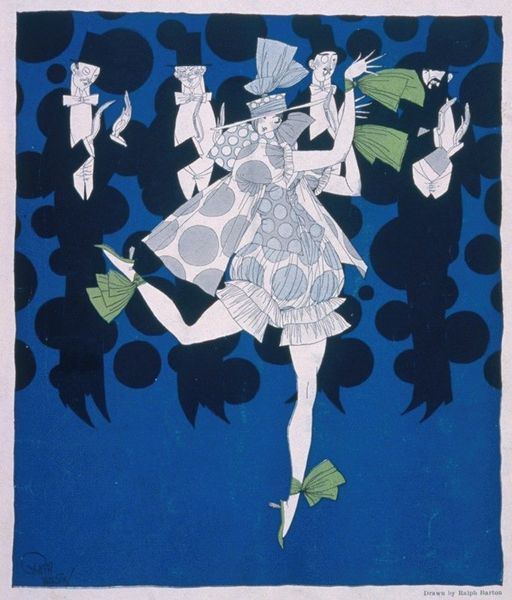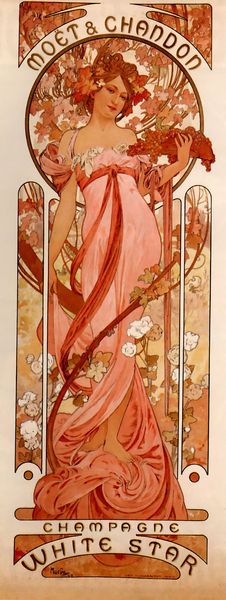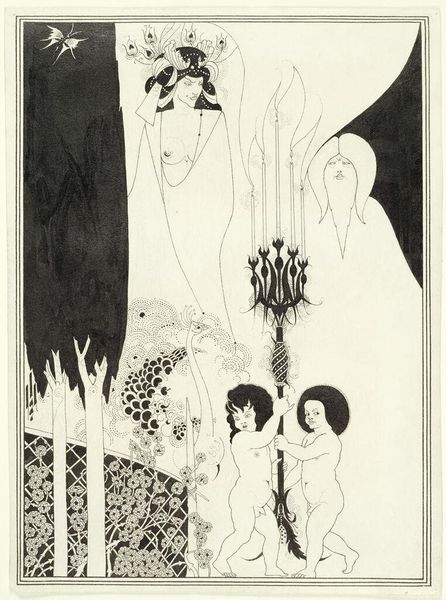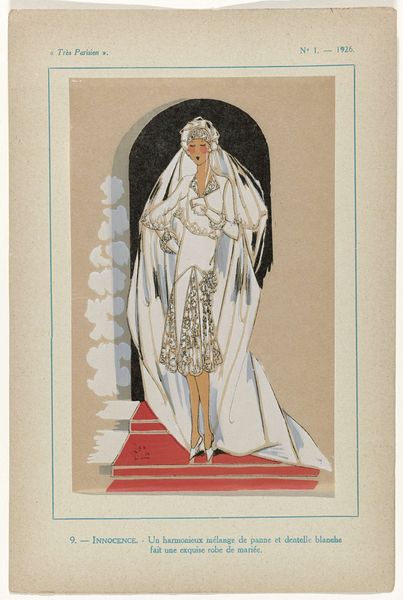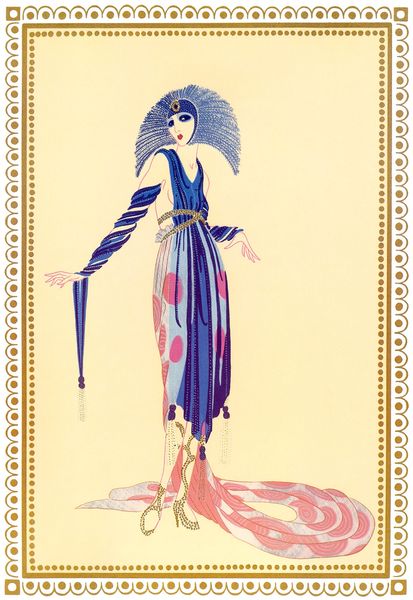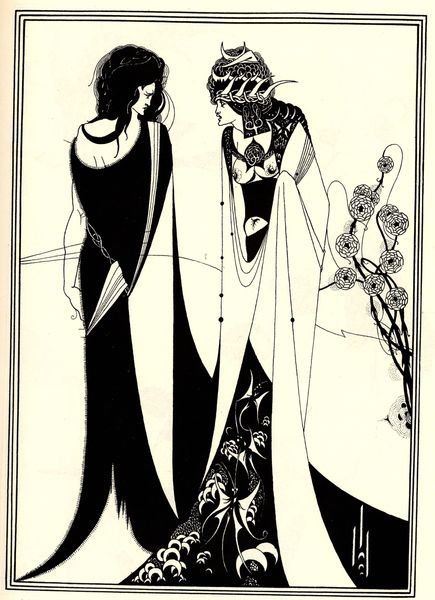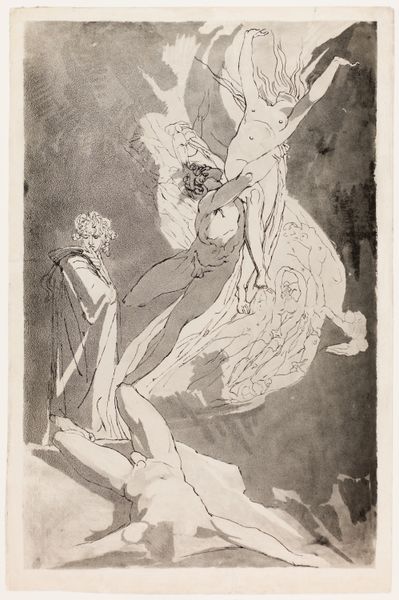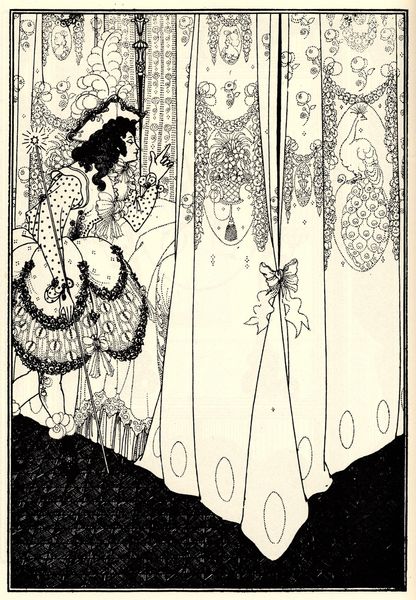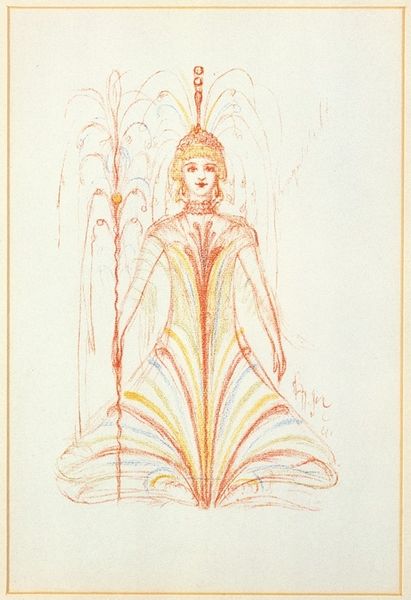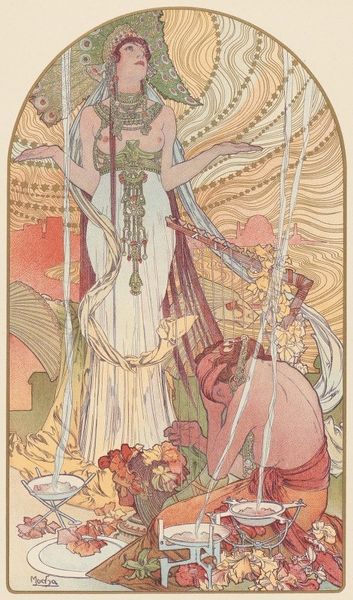
watercolor
#
art-nouveau
#
narrative-art
#
figuration
#
watercolor
#
symbolism
#
watercolour illustration
#
botany
Copyright: Public domain
Curator: Here we have Harry Clarke's watercolour illustration, "The Year's at the Spring," created in 1920. Editor: It's immediately striking how the red hues dominate, almost violently. They convey something more like decay than renewal to my eye. Curator: Indeed. Clarke's approach here blends the flowing lines of Art Nouveau with a Symbolist concern for representing inner states. You can observe the intense detail achieved through layering translucent washes, a demanding and skilled artistic labour. Editor: The figures themselves, though ethereal, seem burdened. Their drooping postures and shrouded forms suggest weariness, a collective fatigue perhaps born of post-war disillusionment. Curator: The figures are deliberately androgynous. It complicates reading into gender binaries. His work challenged norms around sexuality and identity by frequently depicting ambiguous forms. Editor: Look closely at the materiality, the wispy trails of watercolour. He's subverting the rigid boundaries typically found between the decorative arts, book illustration, and supposedly higher painting. Curator: Yes, there's a fragility to it, a reminder of the impermanence inherent to natural cycles. Consider the choice of watercolour. How its fugitive nature accentuates the symbolic themes present. Editor: Perhaps, instead of "spring," this evokes the precariousness of new beginnings, a spring haunted by the ghosts of winters past, shaped, even constrained, by cultural wounds. The question then becomes, who gets to access renewal, and at what price? Curator: A very relevant question, yes. Clarke's technical choices served deeply conceptual goals, challenging not only visual styles, but prevailing ideas about aesthetic and moral beauty in the period. Editor: It does make me think of the collective labor of re-building society, both literally and figuratively. Curator: Well, it certainly seems to ask more questions than it answers. An invitation to delve beneath the surface. Editor: Definitely, this work underscores how the tools and techniques of making art inevitably connect to the cultural conversation happening around it. It also shows that what some consider "spring", might actually be just another reflection of past events and hardships.
Comments
No comments
Be the first to comment and join the conversation on the ultimate creative platform.

